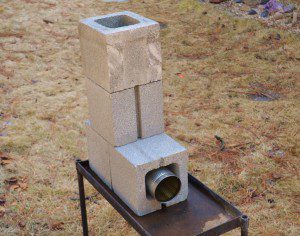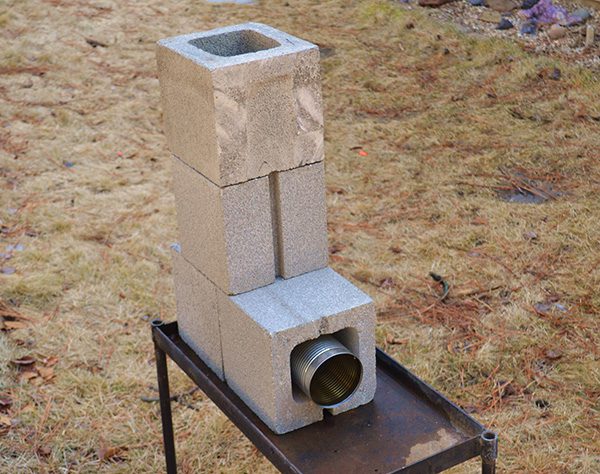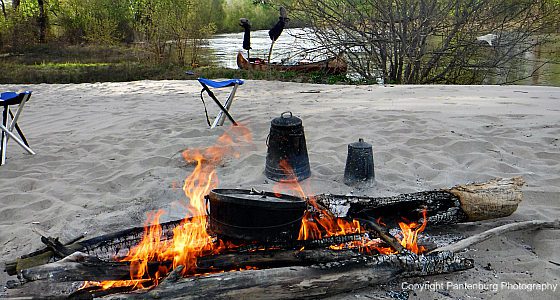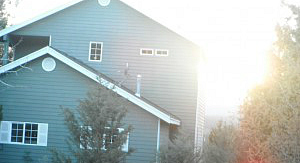Suppose you have to boil water for purification and need an effective way to do it. Here’s how to make a biomass stove out of concrete blocks to get you by until help can arrive.
by Leon Pantenburg
So the earthquake/tornado/whatever hits, buildings collapse, the street is covered in debris and you’re on your own. Or pick a disaster that is likely to happen in your area. Whatever happens, you probably can’t depend on help arriving very quickly.
The first priority might be purifying water. In this case, your choices might be boiling and…boiling. You’re going to have to improvise a heating source that can use the wood biomass scattered all over. And you must be quick about it.
In fact, you may need to build several stoves to take care of the neighbors. Here is a simple biomass stove you can improvise out of the debris.
Here’s the biomass stove materials list:

This improvised block rocket stove could be invaluable after a natural disaster strikes. (Pantenburg photo)
3-4 standard half-size concrete blocks: While concrete is not the best material for making a stove, in this case, the block may be the most readily available building material. A better choice would be fired farm drainage tiles, or pieces of chimney flue. Use what you have. One of the half blocks will have to have one side removed. You can do this – carefully – with some hammer work. Or you could look in the damaged wall until you find a three-sided block.
1-2 Size 2 1-2 tin cans, with both ends cut off. A taller can, like the large canned fruit juice come in, would work even better
Grill eyelet off a gas stove. Or something to raise the pot off the top of the stove by about 1/2 to 1 inch.
That’s it. Assemble the stove as seen in the video above, and you’ll build a pretty effective emergency stove.
If you like how this stove works, and want to make it a permanent fixture in your back yard, consider burying it in dirt at some point. That will help seal the air leaks, and bond everything together. It can also look kinda cool, like some high-tech Dakota fire pit.
A biomass stove makes the best use of woody debris, and this stove will heat water quickly, with a fraction of the wood needed over an open campfire. It is also safer, since the heat, coals and smoke are confined in a small secure area.
Survival gear doesn’t have to be elaborate or expensive – it just has to work. And the best survival investment is learning skills. Know-how doesn’t weigh anything, is always with you and can be a lot fun to learn.
Please click here to check out and subscribe to the SurvivalCommonSense.com YouTube channel, and here to subscribe to our email update – thanks!
Please subscribe to the website: https://survivalcommonsense.com/
You can also order my book: “Bushcraft Basics: A Common Sense Wilderness Survival Handbook” at your local independent book store: https://www.indiebound.org/book/97815…
or on Amazon: https://tinyurl.com/basic-bushcraft-book
or at Barnes and Noble: https://tinyurl.com/Barnes-and-Noble
or at Books a Million: https://tinyurl.com/yc3xdwkg
Thanks!




